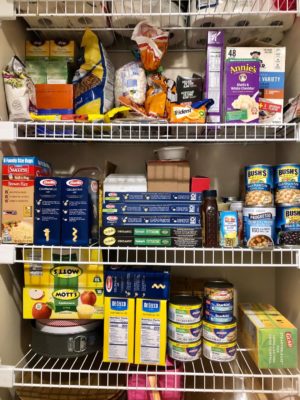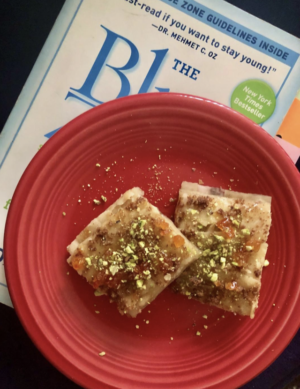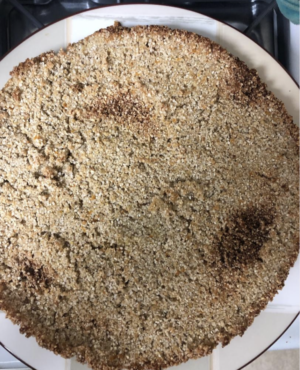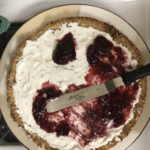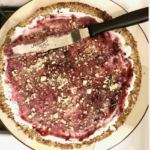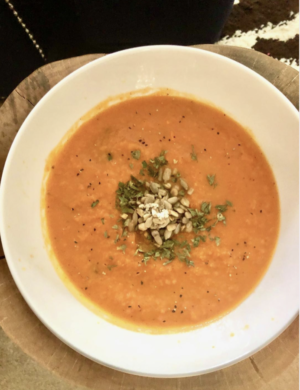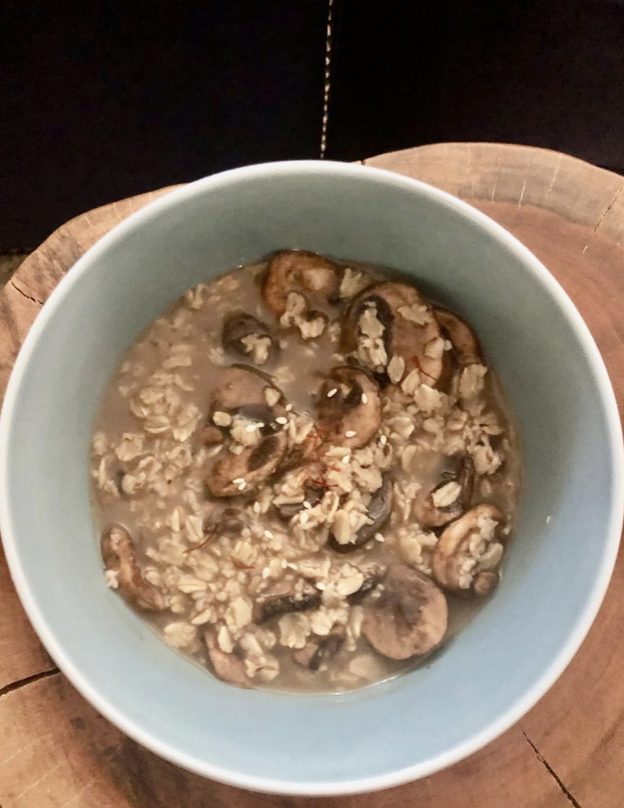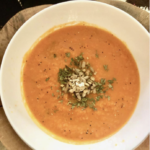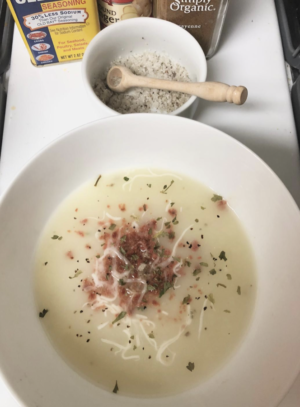Ayurveda is today’s topic. It’s part 2 of 2.
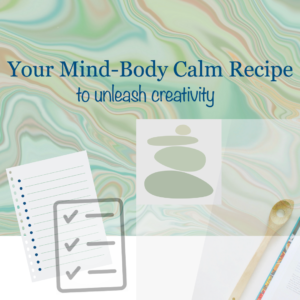
This week, I’m breaking down the secrets of Ayurveda and how it can free you from feeling stuck. And how it restores calm, improves mind-body health, and allows for daily creativity which leads to your best life new opportunities, and passions. That was my experience learning about mind-body types.
…Plus, I’ll clear up the common confusion about Ayurveda if you’re wanting to learn more… and how you can apply simple, but completely effective Ayurveda ways to your lifestyle where you’re at…
Last time, in Part 1 of Ayurveda, I talked about why you want to care about the mind-body connection. If you missed that blog post or aren’t sure, you can go back and read that one too as it could make a game-changing difference in getting your best life today…
I also shared how change and permanence are part of the natural order in this life. They keep us going and growing.
You get to choose whether you want to do this life holding onto anxiety, fears, or worry, or letting them go daily for your emotional freedom and better moods.
…You can restore daily calm even with life chaos happening around you. That’s a healthy choice.
You can change how anxiety, overwhelm, irritations, and triggered situations stick to you when they don’t have to …but, interruptedly rear their ugly head into your system and you just want them to go away!
As humans, we experience these negative emotions to varying degrees. And everyone grows weary and tired at some point.
And, that’s when we want to be vigilant to snap out of those emotions after we purge, process, and know what’s behind them so we can take necessary action, and so that we don’t stay stuck in those places any longer than necessary.
…How?
You step out and sidestep into your daily calm and productivity with the strategy of partnering with your mind-body to soothe and get the most out of the situation and your life… with small effort and adding healthy enhancements.
At some point, you probably figure(d) out that Life is about being in the process. And filled with trying lessons.
Sometimes it can take several similar, but different scenarios to play out to catch onto the lesson and make changes for a better today, tomorrow, and life.
But, when you see your part and role in what happens next, your eyes are open and you can apply wisdom. That takes awareness in the moment or in reflection.
And if you have knowledge or know what to do, you can save yourself from unnecessary pain… and sometimes your life. Like if caught in a rip current wave, you survive by not panicking, calling for help that’s nearby, and swimming parallel to the shore if you can.
You also can survive your daily life situations and undesired moods weighing you down if you know what to do.
Getting through your non-life threatening situations can be challenging for a day or two, as moods can stick like mud, but don’t have to play out and grow into a season!…
And you don’t want them to, because health and stress are on the line, and your moods can worsen and influence you to make poor decisions and miss out on great opportunities.
[In physical health terms, moods are like inflammations… you want them out or on the way out within a few days, or else it could spread like poison ivy inside and become a bigger problem.]
But the really good news here is… you can nip-in-the-bud those less-than moods weighing you down as easily as they entered.
How?…
Co-create the right and comfortable environment that your mind-body wants, and therefore is what you also want!
Remember, you are not your mind-body. Your mind-body runs 24×7 and never shuts off when you’re asleep. Keeping your mind-body in mind (no pun intended), for your optimal life you want to do what will turn things around fastest for you.
That doesn’t mean you need to move or uproot your lifestyle, that just means a few healthy tweaks that your daily mind-body wants.
Ayurveda (the science of life) helps to restore and bring natural balance and order back into our lives despite constantly changing situations… and naturally, the way it’s intended.
In our work-life balance modern world there seems to be a gadget for everything to solve our daily problems and make life easier and help us live longer. But we don’t always use (and sometimes ignore) the most effective tool that’s already built inside us!
In Western world, our health is often seen through the lens of food, fitness, wellness, and self-care. In our healthy efforts, we don’t always get to the root cause and directly restore or heal what our mind-body needs. And that can lead to a long (sometimes painful) season.
…BUT be encouraged, it’s restorable and not your fault!
As you have free will to choose. You do what you feel like doing or think will help based on the (limited) knowledge you have at the time.
And also because…
Our Western Society… The Good and Bad
Conditioning that you and I have received since we were children, that goes like this… Oh, the doctor will fix that…
And as an adult, if you were sent home with a prescription for resting or exercising more, you’d be dissatisfied as most of us know that’s helpful but not what we want from our doctor. We expect a procedure, prescription, or two.
The problem is your body doesn’t want medicines if it can handle the foreign body disruptor on its own. But we don’t know what exactly our body needs because we can’t talk to our body or get inside for those knowing answers.
So, our common Western way is curing with medicines, “just in case,” and because we’re conditioned to expect those protocols.
But, too many antibiotics in the system damage gut health, and surrounding systems that alter your body. Good probiotics can only help so much to reverse effects.
So that’s the bad, but there’s a lot of good in medicine…
Like when used for a disease outbreak where massive chaos in the body has already erupted and medical intervention is needed. Your body needs help.
We can learn from Steve Jobs’ story in more than his genius Apple tech abilities. He passed away too young from cancer. Wisdom leaves clues.
Western medicine doesn’t usually prescribe natural herbs to cure cancer or other diseases.
Anything supernatural can happen in our favor at any time, but that’s not the common or wise protocol. God created doctors and gave us our brains to make good decisions to see doctors when needed.
…So then where does Ayurveda (science of life) fit in?
Ayurveda’s sweet spot is in health prevention, and helping change unwanted common everyday moods and annoying flare-ups.
It’s risky for most conditions that require medical attention. …and I wanted to clear up in case that wasn’t clear and obvious. So good, now you know what Ayurveda is good for…
Ayurveda works for what it’s meant for. But as a practice, not mentioned much in our society partly because prevention can’t be measured. And that’s not where medicine focuses attention.
So, it can get brushed aside or seen as a health fad.
…Even though Ayurveda has been around working as an Ancient healing system for thousands of years.
People smartly use it as part of their daily healthy lifestyle.
They can be part of the routines and habits we stack and track in our day.
When you have a healthy lifestyle and know how to use Ayurveda in your daily life, then you’re better off leaning into your balanced natural essence. There are no downsides to report.
And a decade later… in my opinion, it’s still the “best-kept secret.” And why I’m unpacking it here.
Your mind-body is a direct source that knows what it needs… and Ayurveda cracks that code.
Enter Eastern-Western Ayurveda Awareness
American society tends to lump natural, holistic, alternative medicines, and Ayurveda as mystical and woo-woo, when really what Ayurveda needs is rebranding.
Ayurveda is not just what you see as available products on the market.
Two things that could make people iffy in the beginning about Ayurveda (I know I was!) are:
1.. Messy oils, strange elixirs, and take-time-out routines. They don’t always mesh well in a Western modern society that’s go-go-go where schedules are filled to the brim and even fitting in eating can be trying.
2. Silent practices when you don’t have a door that stays closed or that can shut out the world around you. And without a list of to-do’s or worries for the day running in your head.
Those daily practices are more Eastern (slower-pace life) than Western techniques.
And what works in Ayurveda for Western-style living and restoring mind-body techniques, can be woven into your busy day with very little effort or inconvenience.
You can skip the Eastern-style practices and you won’t be missing a mood-improvement beat… I promise!
And some universal practices you may already be doing sometimes or regularly… like, yoga is a today-popular Western Ayurvedic general practice. Sometimes you have time to fit in, and sometimes you don’t, but it’s not the end-all-be-all to making moment-to-moment restoring changes because yoga reset to feel-good feelings lasts for a 90-minute class, a cup of tea, and maybe a relaxing spa visit, but then you’re back to your life, triggers and interruptions in your mind, and your work.
Even though I love yoga!… maybe you too?
In 2008, there were few studios when I had to search around so I’m glad it has taken root.
Another popular example is eating plant-based anti-inflammatory foods. Yup, that’s part of a healthy Ayurvedic lifestyle. Wherever you are, you have access to markets, online stores, farms, and gardens (…or you can start your own).
…So you may already have a ‘lil Ayurveda in you! 😉
…So, is an Ayurveda lifestyle right for you?
These are questions you can ask yourself and things to think about:
Are you interested in preventative health?
Are you interested in unleashing more daily creativity?
Are you a lifelong learner who is open to the deeper self?
And do you want to live sustainably healthier and longer?
…Like Blue Zone Centenarians who live healthy lifestyles that are part of their culture. They don’t live like most Americans (and not even the Adventist Health Blue Zone community in California).
Some live more simply, slower lives, eating from the land, and need less mood restoring without all the complicated high tech. 😉
And so many countries rank higher in longevity than the States, that’s ranked closer to the bottom. That’s a hard pill to swallow considering all the conveniences we have.
…Even though I can’t imagine my identity with any other culture.
So I added Ayurveda into my lifestyle to make up for the deficit.
And you can too. The thing is… you’re probably already habitually doing Ayurveda to some degree in your healthy every day routine. You’ve been using all your senses since you were born.
…But probably not for balancing moods consistently as you didn’t know what really works with your specific mind-body, type, and imbalance combinations you’re experiencing. That’s really what it boils down to.
And when you do change your moods and imbalances, then you can get to your inner creative self more easily and consistently.
Creativity Inside Us
Sometimes there’s a creative block. And we don’t know what we don’t know could be, or are missing out on our greatest passions that give us joy.
I was creatively mind-blocked in my corporate management work life.
I couldn’t be fully creative beyond short spurts of free time where I delved into hobbies for creative outlets.
In those few moments, I experienced calm, joy, and felt weight off my shoulders. I could get into a creative flow where I lost track of time and those were usually well into the weekend or on a Sunday.
…Have you been there or can relate?
Unleashing the creativity inside feels free-ing. And when I got longer stretches of time away from work, I realized I had creative hidden talents I didn’t even know I had, that were waiting inside me for the right-ready time.
…And you do too. Plus, ones that you haven’t uncovered because you have gotten there yet to take action.
After you remove the anxious, stressful, and overwhelming layers and feelings, you can get a direct path to your creative juices and energy.
That’s your ticket to your happiest and best life. When you feel lighter and good, you feel on top of the world.
You feel empowered at the very least, and maybe even superpowers to take on activities you didn’t know you could perform (like sing or dance… you get the point).
And that’s a time when you get the most out of your life and push the pedal forward and make breakthroughs.
It’s the opposite of these types of common feelings (that keep you uninspired and stagnant):
–Tired: where you don’t want to do much let alone work on a creative pursuit. You lack energy but with a good night’s rest you can be renewed and passion-filled again if you’re re-energized, aren’t triggered, feeling burnout, or are depressed.
–Anxious: where you’re trying to manage your anxiety symptoms to stay afloat… trying to stay relaxed while your body-mind takes over. That’s a bad time to make good decisions, let alone try and be creative.
–Irritated: where you’re trying to get over negative feelings and a critical-judgmental mind that permeate your system when energizing the wrong thoughts. Good creativity doesn’t emerge in non-loving attitudes.
But, you can change the channel or get your relaxed self back as quickly as you got in your tense state. Like in the shower, the ideas can come. Or in a joyful activity where you lose track of time.
And, if you’re feeling balanced and calm throughout the day as the normal way, that changes everything. You can switch to your creative self when you want without losing valuable time.
And those steps take you to your next move in life, passions, and pursuits.
And if that’s where you are ready to go and be your very best today, but maybe feeling off or not quite there yet, start with the body balance quiz that shows symptoms on the body as part of the mind-body connection.



